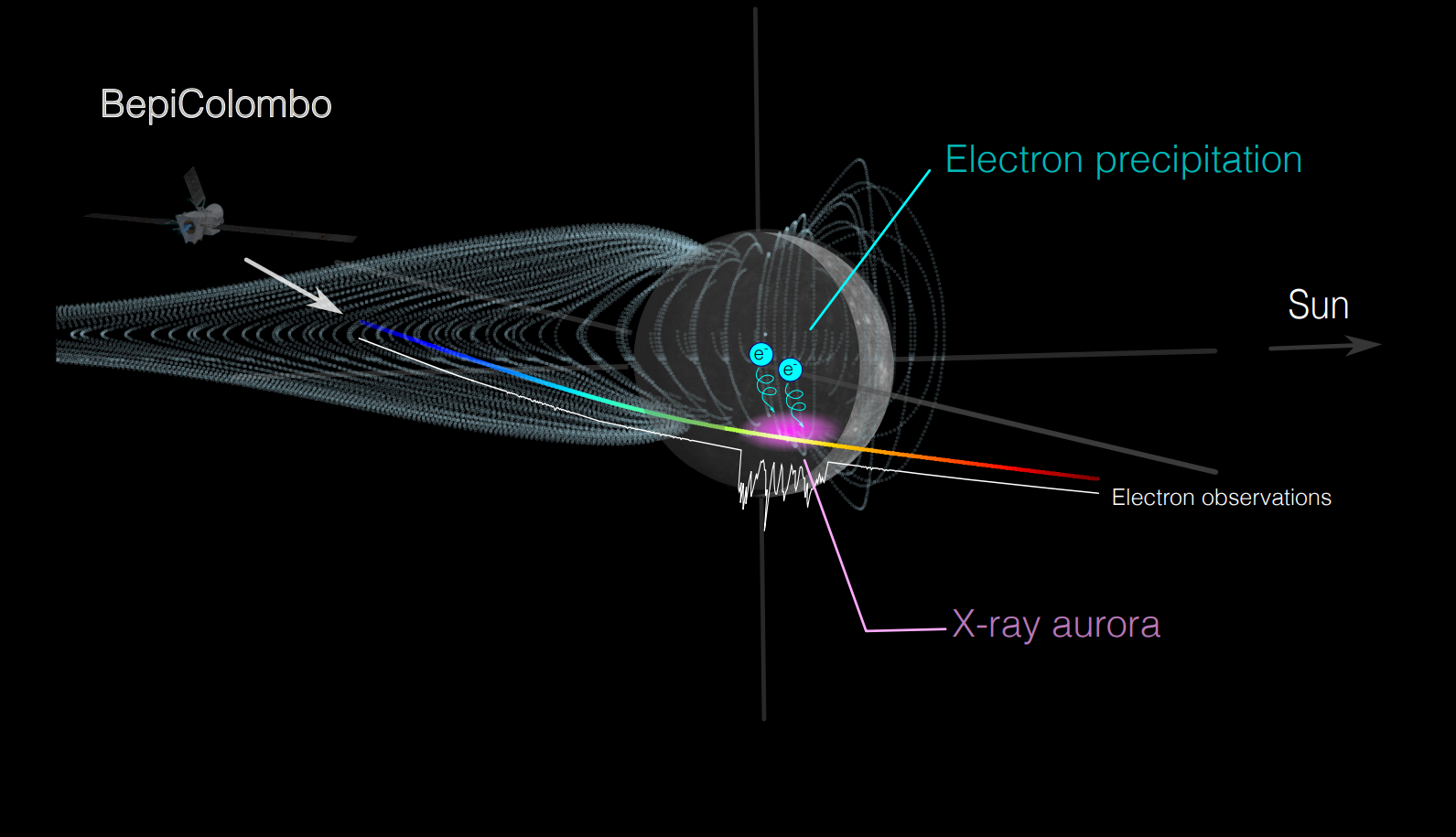News release
From:
Astronomy: Auroral mechanisms may be universal in the Solar System
The mechanism that generates aurorae in planetary magnetospheres may be universal throughout the Solar System, according to a Nature Communications paper. The study reports data from the BepiColombo mission’s first flyby of Mercury and reveals that Mercury’s southern magnetosphere aurorae are similar to those seen on Earth and Mars.
Mercury’s magnetosphere — the region around the planet dominated by the planet's magnetic field — is known to experience rapid reconfigurations, which happen following magnetic reconnection with solar wind, and processes similar to those observed around Earth, Jupiter, Saturn and Uranus. However, our knowledge about reconfiguration cycles has been limited to spacecraft observations of Mercury’s northern magnetosphere, by the type of particles, and by the energy range detected.
Sae Aizawa and colleagues analysed simultaneous measurements of low-energy electrons (less than 30 kiloelectron volts) and ions during the BepiColombo mission’s first flyby of Mercury in October 2021. They found direct evidence that energetic electrons are accelerated in the near-tail region of Mercury's magnetosphere, drift rapidly toward the dayside, and are subsequently injected onto closed magnetic field lines on the planetary nightside. This process is observed as X-ray aurorae.
The authors suggest that, despite differences in the structure and dynamics of the planetary magnetospheres, electron injections and subsequent energy-dependent drift are a universal mechanism observed throughout our Solar System.



 International
International



